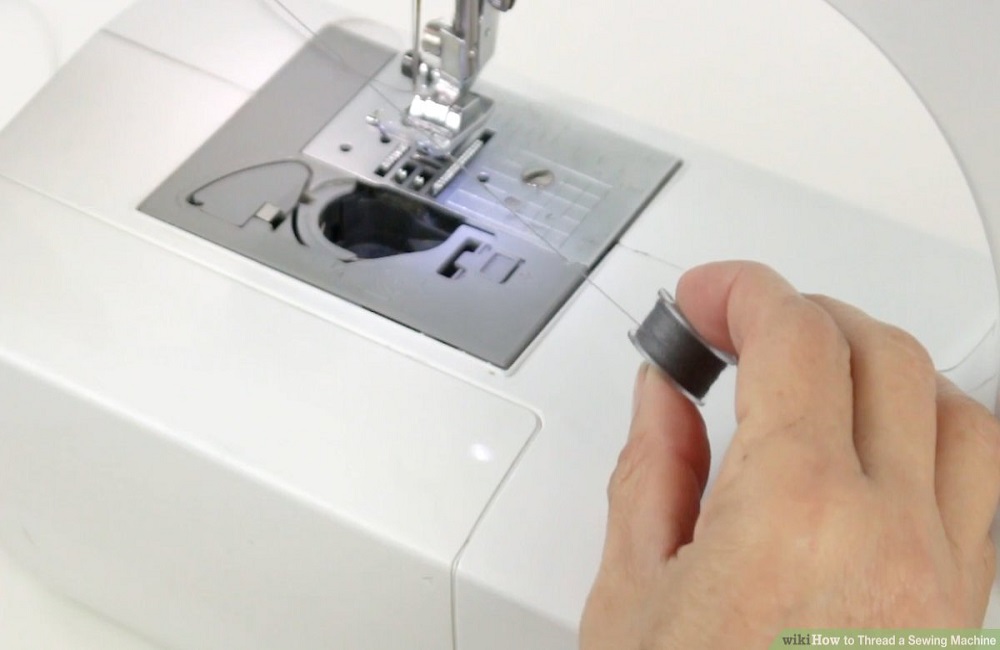
How To Thread A Sewing Machine
Threading a sewing machine is a very quick and easy process if you know it well. At first, it may seem like a long and complicated problem to you, but if you keep practicing it will soon become easier for you, and you will be able to finish your trading very quickly. But in order to thread you need to know about your machine first because different sewing machines have different threading procedures. Here we are going to discuss how to thread a sewing machine, so let’s begin;
How To Thread A Sewing Machine
Step 1: A sewing machine uses two kinds of threads, one is a spool of thread sitting on top of the machine and the other is a bobbin of thread coming from below. Before threading on the machine, you need to bring the thread of your choice out of the spool and over the bobbin. The spool of thread should be placed on top of the spool pin. Some spool pins are sticky at the top, others have to run towards left and some have a plastic cover to hold the spool in position. Loosen the thread a few inches, pull it to the left, and position it at the top of your panel, round the front of the tiny nubbin.
Move it through the tiny hole at the top of the bobbin, tie it several times, and loosen it back and forth. In certain machines, pulling out the handle on the right side of the unit helps you to wind the bobbin without lifting or lowering the needle. You don’t need to do that on other machines. The machine already realizes that the bobbin is wrapped as it’s going for a halt. With the machine turned on and the thread protruding from the bobbin for the first few seconds, press the foot pedal to continue winding the thread on the bobbin. Cut the thread to split the spool from the bobbin, then turn the bobbin winder to the left to detach the bobbin. Then shut the machine off so you don’t inadvertently overload your hands as you do the next step.
Step 2: Now it’s time to thread the machine of yours. Next, go through the top of the spool. The thread is expected to come out of the back of the spool to the left. First of all, remove the thread from the tiny silver tension disc. These are for winding the bobbin, so if you mistakenly leave the thread there, the stitch is going to be very close. There are one or two hooks on the top of the frame, and the threads need to travel around. Test the manual if you’re confused about it.
Then you need to lower the thread to the needle. Maybe the machine has an arrow, so be sure that you’re not mistaken. The direction from left to the right-hand side of the first hook, then the first groove down, the left side of the second groove up, through the eyes of the second hook, then the second groove to the right this time. There are one or two hooks on top of the needle. let the thread protect behind the hooks.
Step 3: Now it’s time to thread the needle. the needle needs to be threaded from front to the back. Be sure that the thread is not intertwined with the needle. If the needle is in the slot, turn the handwheel and move it to a position where it can be easily threaded.
Step 4: Now we are going to thread the bobbin. The bobbin thread basically goes under the machine. Some machines are front-loading where the bobbin goes to the front of the machine and others are top-loading, this bobbin goes to the top of the machine. So you have to look after all this.
Step 5: The last thing you need to do is use the spool thread (above) to bring the spool thread closer to the surface of the machine to pull it out. Keep the spool thread with your left hand and twist the handle with your right hand to push the needle up or down. Slowly remove the upper thread with your left hand and the lower thread loop will come free. Take out this bobbin loop, this is the bobbin thread in your machine. Now seal the cover and place your hand on the machine.
Conclusion: After adopting all the above methods you are completely ready to sew. But before starting the sewing work, it is better to practice the methods a few more times as per the instructions. After practicing a few times, you will realize that it is actually a very quick and easy process if you practice it well.


